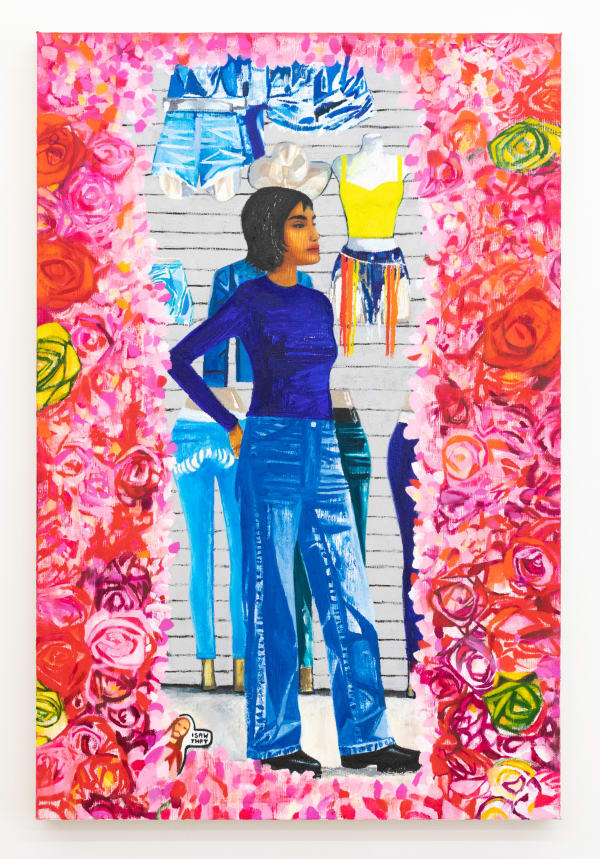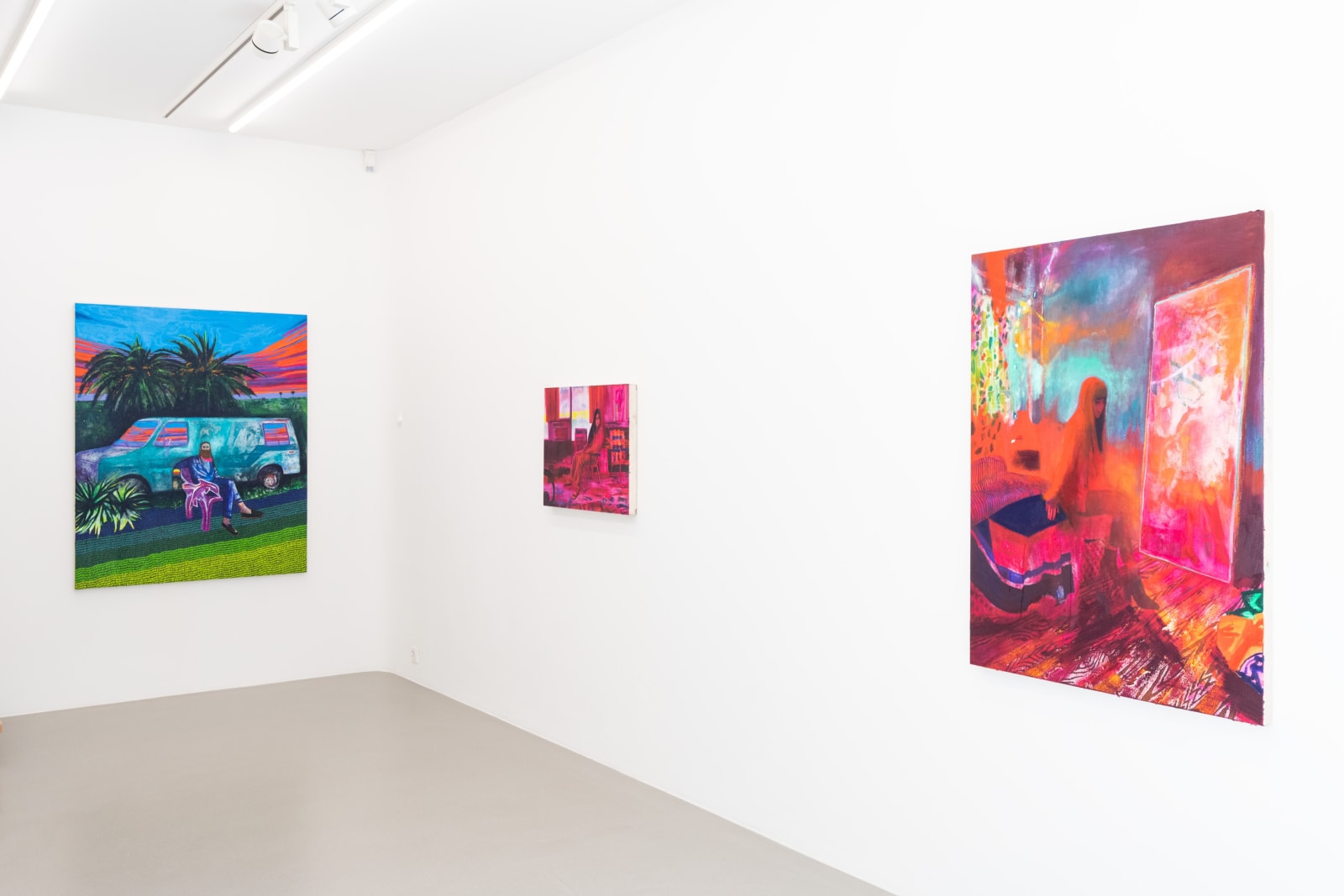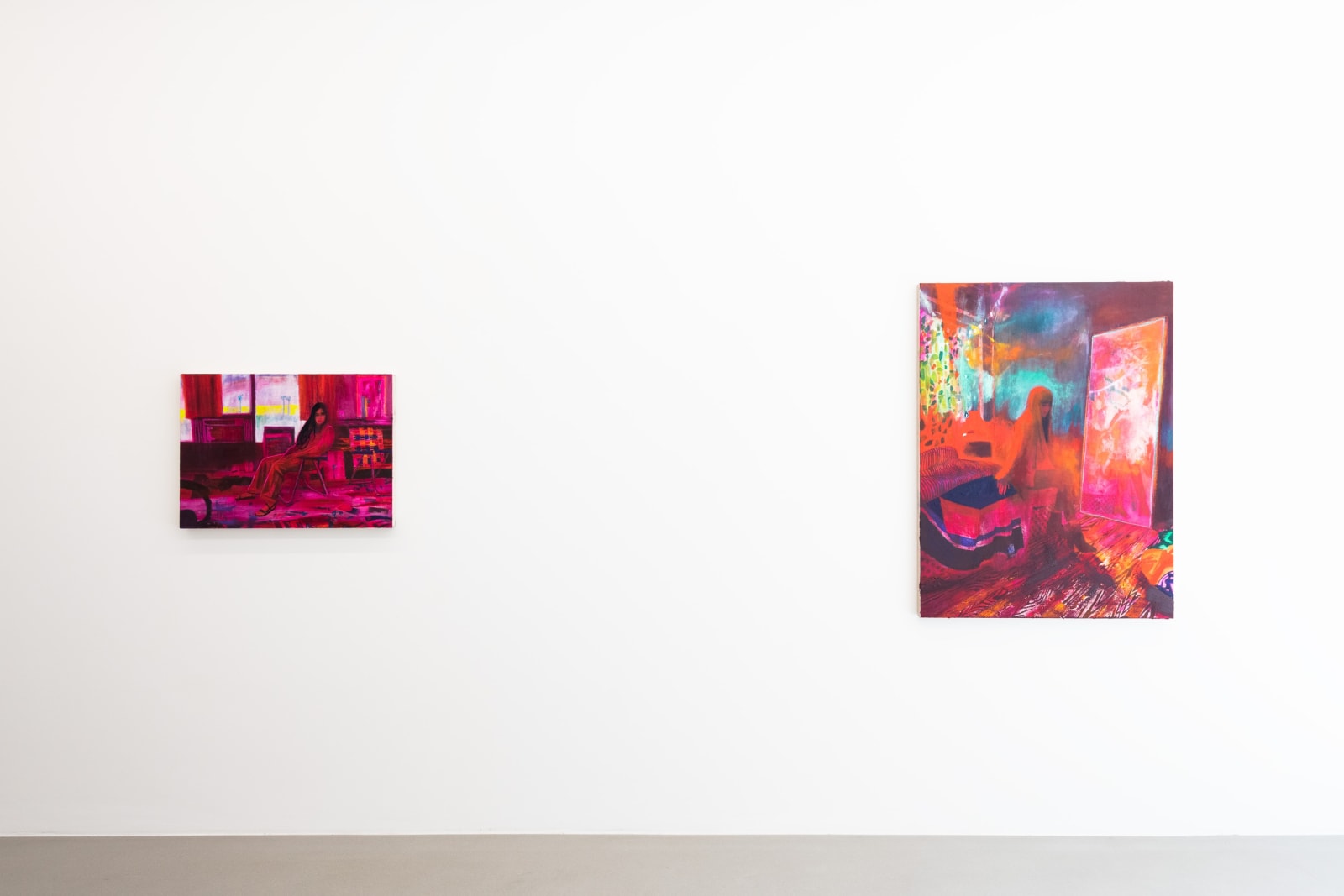Raffi Kalenderian: Across the Way Moved in a PairGalerie Peter Kilchmann, Rämistrasse, Zurich
Galerie Peter Kilchmann is pleased to present the sixth solo exhibition by Raffi Kalenderian (*1981 in Los Angeles, where he has lived and worked ever since) at the gallery. In his paintings, Kalenderian draws on the strong attraction of light and colour and the intimate moment between model and artist that is so particular to the medium of portraiture.
June 10 - July 29, 2022
-
 Raffi KalenderianJess, 2022Oil on linen123 x 91.5 cm (48 43/100 x 36 ⅕0 in.)
Raffi KalenderianJess, 2022Oil on linen123 x 91.5 cm (48 43/100 x 36 ⅕0 in.) -
 Raffi KalenderianAlondra, 2022Oil on canvas56 x 76 cm (22 ½0 x 29 23/25 in.)
Raffi KalenderianAlondra, 2022Oil on canvas56 x 76 cm (22 ½0 x 29 23/25 in.) -
 Raffi KalenderianFabian Marti (Dolphin Chair), 2022Oil on canvas153 x 122.5 cm (60 6/25 x 48 23/100 in.)
Raffi KalenderianFabian Marti (Dolphin Chair), 2022Oil on canvas153 x 122.5 cm (60 6/25 x 48 23/100 in.) -
 Raffi KalenderianDavid, 2022Oil on canvas51.5 x 36 cm (20 7/25 x 14 17/100 in.)
Raffi KalenderianDavid, 2022Oil on canvas51.5 x 36 cm (20 7/25 x 14 17/100 in.)
54 x 38.5 cm (21 ¼ x 15 ⅛ in.), framed -
 Raffi KalenderianIsis (Spiritual Pink), 2022Oil on linen92 x 61 cm (36 ¼ x 24 in.)
Raffi KalenderianIsis (Spiritual Pink), 2022Oil on linen92 x 61 cm (36 ¼ x 24 in.) -
 Raffi KalenderianLars, 2022Oil on canvas77 x 56 cm (30 ¼ x 22 in.)
Raffi KalenderianLars, 2022Oil on canvas77 x 56 cm (30 ¼ x 22 in.) -
 Raffi KalenderianAlyssa, 2021-2022Oil on canvas153 x 122 cm (60 ¼ x 48 in.)
Raffi KalenderianAlyssa, 2021-2022Oil on canvas153 x 122 cm (60 ¼ x 48 in.) -
 Raffi KalenderianThe Visit (After Valloton), 2021-2022Oil on linen178 x 249 cm (70 x 98 in.)
Raffi KalenderianThe Visit (After Valloton), 2021-2022Oil on linen178 x 249 cm (70 x 98 in.) -
 Raffi KalenderianDiana, 2021Oil on canvas152 x 213 cm (59.8 x 83.9 in.)
Raffi KalenderianDiana, 2021Oil on canvas152 x 213 cm (59.8 x 83.9 in.)


















